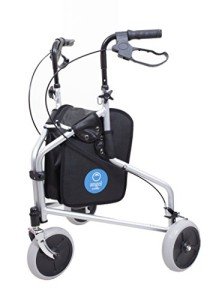This company has no active jobs
0 Review
Rate This Company ( No reviews yet )
About Us
The 10 Scariest Things About Medical Walker
Understanding Medical Walkers: A Comprehensive Guide
Medical walkers function as vital mobility aids for people recovering from surgery, managing chronic diseases, or handling age-related mobility concerns. These devices not only improve physical independence however also enhance safety, permitting users to navigate their environments with higher ease. This article explores the types, benefits, features, and considerations connected with medical walkers, in addition to some often asked concerns.
Tabulation
- Kinds Of Medical Walkers
- Benefits of Using a Medical Walker
- Key Features to Consider
- Frequently Asked Questions
- Conclusion
1. Kinds Of Medical Walkers
Medical walkers are offered in numerous designs, accommodating various requirements and preferences. The primary types include:
| Type of Walker | Description |
|---|---|
| Standard Walker | A rectangle-shaped frame with 4 legs, providing stability and support. |
| Two-Wheeled Walker | Comparable to a basic walker however geared up with wheels at the front for simpler movement. |
| Three-Wheeled Walker | A lightweight walker with three wheels, permitting more maneuverability, suitable for indoor use. |
| Rollator Walker | A walker with 4 wheels, hand brakes, and a seat, suitable for longer ranges and resting needs. |
| Hemi Walker | Designed for individuals who can use only one hand, including a tripod-like style. |
2. Benefits of Using a Medical Walker
Utilizing a medical walker provides a number of benefits that add to the user’s total wellness, including:
- Increased Stability: Walkers provide a stable base of support, minimizing the danger of falls.
- Enhanced Mobility: They make it possible for users to move more quickly, promoting independence.
- Discomfort Relief: By redistributing weight, walkers can alleviate discomfort in the joints, especially in the hips and knees.
- Posture Support: These gadgets encourage proper posture, reducing pressure on the back.
- Improved Confidence: Users often feel more safe utilizing walkers, leading to much better self-esteem and increased activity levels.
3. Key Features to Consider
When choosing a medical walker, it’s essential to evaluate numerous features to discover the right fit. Here are some important elements to think about:
- Weight Capacity: Ensure the walker can support the user’s weight while keeping stability.
- Height Adjustment: Look for a walker with adjustable height settings to accommodate the user’s height and provide comfortable grip.
- Material: Lightweight aluminum walkers are simpler to steer, while steel walkers use stronger support but might be heavier.
- Wheel Quality: If choosing a wheeled walker, think about the wheel size and tread. Bigger wheels browse uneven surface areas more easily.
- Seat Availability: If users will be walking for longer durations, a walker with an integrated seat can provide rest breaks when needed.
- Brakes: Hand brakes are particularly essential for safety in rollator walkers to control speed and stop when needed.
Kinds of Walkers with Features Comparison Table
| Walker Type | Weight Capacity | Height Adjustment | Wheels | Seat Available | Brakes |
|---|---|---|---|---|---|
| Standard Walker | As much as 300 pounds | Yes | No | No | No |
| Two-Wheeled Walker | Approximately 300 pounds | Yes | Yes | No | No |
| Three-Wheeled Walker | As much as 250 lbs | Yes | Yes | No | No |
| Rollator Walker | As much as 400 pounds | Yes | Yes | Yes | Yes |
| Hemi Walker | Up to 250 lbs | Yes | No | No | No |
4. Regularly Asked Questions
Q1: Who ought to use a medical walker?A: Medical walkers are useful for people recovering from surgery, experiencing balance problems, or needing assistance due to age-related mobility difficulties. Q2: Can a medical walker be adjusted?A: Yes, many
medical walkers are height-adjustable to accommodate various user heights, enabling a more comfortable grip. Q3: How do I pick the ideal walker for my needs?A: Consider aspects such as the
user’s weight, height, kind of mobility problems, and whether they need a seat or brakes. Testing the walker for comfort and stability before purchase is likewise advisable. Q4: Are there any safety tips related to using a medical walker?A: Yes, users must guarantee they don’t lean too
greatly on the walker, use it on steady and level surfaces, and constantly make sure
the brakes are engaged when seated or fixed. Q5: Can walking with a medical walker aid with rehabilitation?A: Absolutely. Medical walkers are often recommended as part of rehabilitation programs as they encourage
physical activity, which aids in healing and mobility enhancement. 5.
Conclusion Medical walkers play a crucial function in enhancing the lifestyle for individuals facing mobility obstacles. With various types and functions offered, choosing the best walker involves considering the user’s particular needs and situations. By comprehending their benefits and proper use, people can restore independence, enhance their mobility, and browse their surroundings securely. Whether for short-term healing or long-lasting assistance, the best medical walker can significantly improve a user’s general wellness. Integrating a medical walker into one’s everyday routine can be a transformative choice, making it much easier to take part in life’s everyday activities while ensuring safety and self-confidence.

